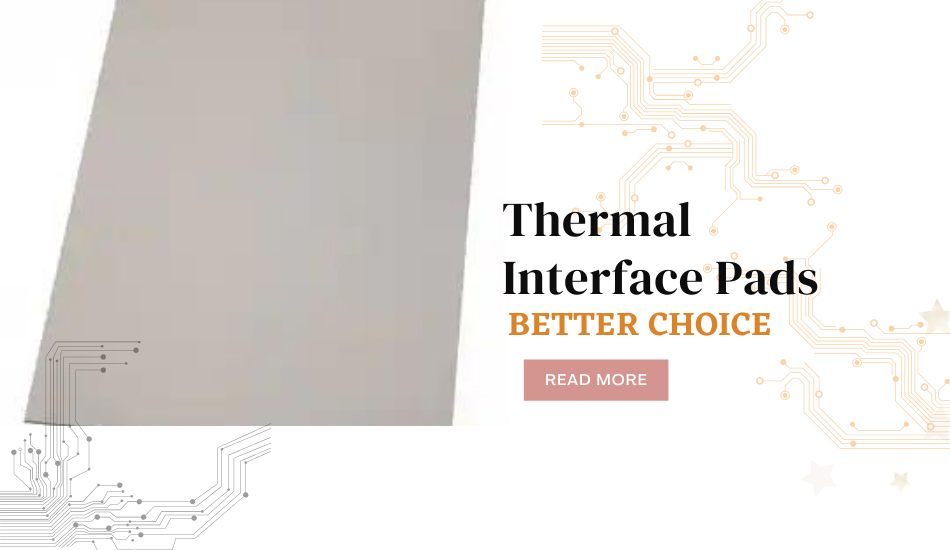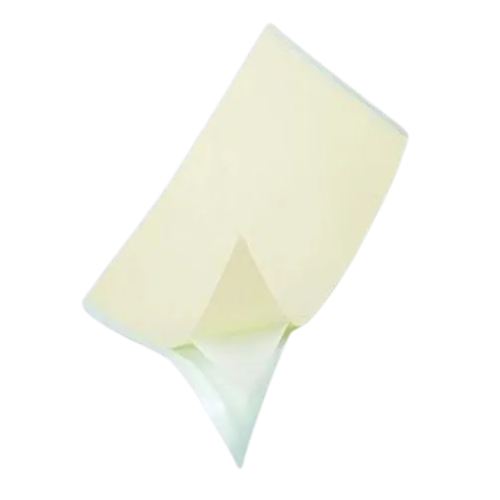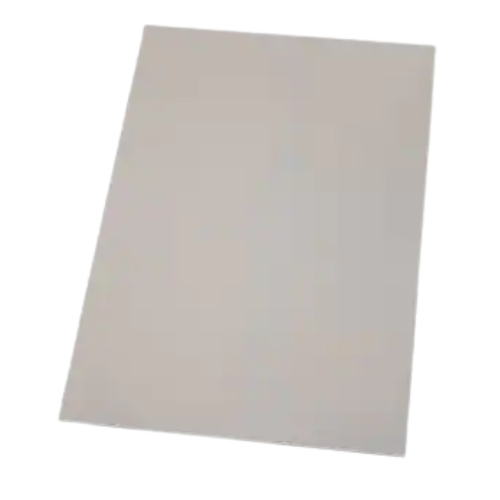The use of thermal interface materials is common in a variety of processes. It is necessary more than common, ranging from everyday consumer electronics to avionics and aerospace applications. No matter what your application is, you still need to learn more about successful and better methods of heat dissipation.
Best Offer Available
What is the Need for Thermal Management Solutions?
An additional and more viable thermal solution arises from the difference between the heat removal methods and heat-generating components. The heat generation is usually faster and more rapid than the amount of heat removed, which creates the need for additional heal removing options.
The electronic devices do not have enough cooling from the internal heat dissipation methods due to the lack of space to install fans, blowers, and heat sinks. The device’s performance also reduces over time due to the lack of proper thermal solutions.
The overheating causes damage to the core of the device and hits areas like complex circuits and wiring and PCB circuits. Once these elements and components lose their efficiency, it’s only time before that device will fail soon.
There are several types of thermal interface materials in thermal interface pads, and heat transfer pads are one of them.
What are Thermal Interface Pads?
The thermal interface pads are also known as thermal management pads, and these are used in the middle of the two components of the electronic device. For example, we have acrylic thermal interface material, which comes in several sizes. It is adhesive and requires just a small amount of external pressure, and it will stick to the heat-generating component and heat sink.
The primary reason for using the thermal interface pads is that they are very quick to install and have great strength to hold the device together. The thermal material always provides additional cooling and brings the temperature down by transferring the heat through the material of the tape.
How come the Heat Transfer Pad is a Better Choice than Other Types of TIMs?
There are several types of thermal interface materials. We have thermal pastes, greases, pads, thermal liquids, and many other types, but thermal management pads are the best option for electronic devices.
The heat transfer pads come in different sizes and materials like we have acrylic thermal interface material, then we also have the same pads but in a different material that is acrylic and so on.
Thermal interface pads are the best option for using an electronic device because they are very easy. These come in the shape and size required for that process and are pre-cut to peel and use.
These are non-messy options over the thermal paste or thermal grease. You do not need to give it additional time to get dry before using the device. You just peel the lining of the thermal or heat transfer pad and stick it to the surface that needs a thermal solution, the other side is placed on top of the thermal management pads, and it bonds the heat generating and heat removing components.
This works as the bridge, while it has amazing dielectric properties, meaning it also removes some heat.
Types of thermal interface materials
Adhesive Tapes
Thermally conductive adhesive tapes have the gain of being each part of the thermal control gadget and the mechanical balance of the structure. Adhesive tapes are generally used to stick LED lighting and semiconductor programs to heat sink surfaces.
Unlike a number of the opposite substances mentioned below, tapes best require stress to obtain their complete potential. You can also update mechanical attachment hardware like springs and screws, which reduces your prices and setup time.
Pastes, Putties, Gels, and Greases
Thermal pastes, putties, gels, and greases are produced in the fluid country at room temperature. They generally have a consistency like toothpaste or smooth butter.
While a few merchandise are designed to harden or treat right into a rubbery consistency after being carried out. A few will continue to be fluid for their complete operating lives.
Grease is generally bought as a non-curing product and carried out in skinny layers to assist with the thermal switch among surfaces which can be usually easy and flat. Putty is a fabric that is carried out to boom thicknesses. It is used to fill gaps that can be gifted among abnormal or uncommon surfaces or those that don’t contact one another.
These merchandises are electrically non-conductive. However, a few may be designed to be conductive and might cause problems if the bridge nodes in the circuit must now no longer be connected.
Unfortunately, relying upon the application, numerous problems might also additionally arise. In maximum cases, a higher alternative is to apply pads, tapes, and adhesives or roll goods, as they take away among the maximum, not common problems.
Phase-Change Materials
The phase-change substances or PCMs will change from a strong country to a viscous liquid at decreased temperatures. This generally is in the variety of 131 to 149 tiers Fahrenheit.
This phase-converting well permits you to address and method the substances as strong at room temperature and hold the wetting and conformability homes of fluids at improved working temperatures.
These are relative to grease-country merchandise. However, PCMs provide some extra attractive benefits. They aren’t as messy at some stage in a guide meeting method.
All that is viable whilst presenting overall thermal performance. While that is true, PCMs have a decreased tolerance for misapplication, and they price extra.
PCMs may be discovered in numerous forms. These consist of bulk rolls or sheets, shapes that can be pre-reduced from the identical shape to shape sure tool programs, dispensable fluids, and deodorant-like sticks to offer a rub-on application. After the preliminary application, the dispensable fluids are designed to harden or dry to a strong phase-converting country.
The shape- and sheet-kind merchandise will integrate the selected PCM with different substances to provide acceptable homes, advanced structural integrity for clean dealing, or a dependable electric insulation characteristic.
Potting Compounds and Liquid Adhesives
Thermal adhesives are a specialized sort of glue. It would be best to buy those as stress touchy tapes or sheets and as curing fluids.
A thermal potting compound is, in particular, designed to offer defensive encapsulation. This happens whilst permitting a heated switch from the innards of a gadget to the outer shell.
Some will slightly persist with a floor while carried out and maybe peeled away easily. Others offer slight adhesion, and a few will also provide everlasting adhesion.
Some can have a rubbery and smooth texture while cured and are clean to harm or tear, just like a company cheese. Others will treat nearly in a rigid country.
Advanced Materials
A more recent thermal fabric is primarily based totally on a sort of carbon known as pyrolytic graphite. These have the uncommon belonging of being anisotropic.
Through the thickness of those sheets, it’s miles viable to behaviour heat simply in addition to any of the opposite TIMs listed. The base fabric could be very bendy and presents a slight stage of electrical conductivity.
Because of the specific traits of those graphite-primarily based substances, they could flow heated around in the tight confines of present-day consumer devices.
What are the Benefits of Using Heat Transfer Pads?
Thermal management pads have plenty of benefits, and most manufacturers of wearable and other consumer electronic devices are turning toward this option.
- It provides extremely clean and safe application, and there is no mess after the usage.
- No need to clean the workstation, unlike the thermal grease or thermal paste.
- It is very easy to handle and work with.
- These come pre-cut in desired shape and size.
- There is no additional equipment needed for applying it.
- It also saves time in the assembling and manufacturing process.
What Factors Can Change the Suitability of TIM?
Now we understand the need and benefits of using thermal pads. Still, several factors create the right product that will be fit for use in a certain application, so we also have some factors to ensure that our process runs smoothly and the heat transfer pad we are using provides the best result.
Some of these factors are mentioned in the datasheet, and for some, you need to connect with the sellers or authorized vendors for the top-rated thermal interface pads. Some of these key factors are:
Thermal Conductivity
Thermal conductivity is the key that shows the performance of the pad. There are several heat-generating components, and the amount of heat your thermal management pads can dissipate. Thermal conductivity comes into play here, which determines the temperature, environment, and other device factors.
Physical Properties
It refers to the point that determines the thermal pads’ physical strength. This factor also plays a big role in the suitability of the thermal pad. Other physical properties like hardness, deflection, and compression can affect the result of the pad.
Some users prefer compounds or gels to protect their sensitive components, even though these dispensable products may have disadvantages discussed later. Finding the right TIM for your application pressure and gap thickness design is important.
Mechanical Properties
The mechanical properties refer to the build and compatibility of the thermal material with the other components and basic material types of the device. Not every type of thermal interface material can be compatible with your device’s metal or plastic body.
Electrical Insulation
It shows the capacity of the TIM, which can contain electricity. Thermal management pads from 3M usually have very good insulation. The thickness of the thermal pad can determine it capacity of the electrical insulation.
Use Cases
Then comes the application. Not every TIM could be compatible with the type of metal; similarly, not every TIM is compatible and safe to use in any application. Other factors can change the way your application work.
Application Factors
In this, we confirm the best option for the ease of handling and use application. For example, the acrylic thermal interface material from 3M is pressure-sensitive. Still, if you are using thermal paste or grease, you should use some additional equipment to spread the material on the surface. There are different attachment and bonding methods for every type of thermal interface material.
How to Buy the Best TIM?
As there are several thermal pads, no recommended thermal interface pads can be used blindly in any application. Some people find it very daunting and overwhelming to find the right type of thermal interface material that will work well with their process.
There are several ways to find the right thermal interface material, and finding an authorized vendor for this can be the best option for this, and 3M authorizes us.
E Control Devices has the entire thermal management solution range from 3M. We have the technical assistance team, and they have the required skills and expertise for providing recommended thermal interface pads.
Thermal interface pads have become synonymous with electronic devices’ thermal management solutions. Similarly, there are some other applications like data centres that need other types of thermal solutions like engineered fluids or liquid coolants in which the complete module or the device is dunked or submerged to cool the device. The devices are not disconnected from the power, and the cooling process goes along with the computations.



